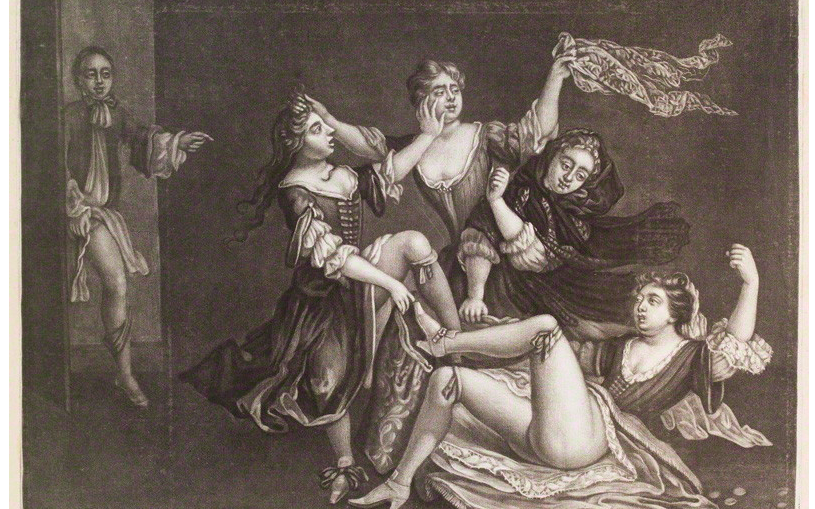
Fight for the pants

On the occasion of the Valentine’s Day I would like to focus on the relationships – this time it will be all about the prints. There are some popular subject matters in the European art that kept coming back through the centuries. One of them is so called “Fight for the Breeches” (also “Fight for the Pants” or “Fight for the Trousers”). Actually, there are two separate subjects that are described with this title, and as a result they are often confused, however their meaning is different.
First of all, there are the scenes depicting gender fight over the power in the relationship. It is a battle for dominance in a marriage, a quarrel about “who wears the pants”. Theoretically it should be a husband, a lord of the household, but some wives just refuse to accept that natural hierarchy. Of course if the wife manages to dominate her husband, he becomes an object of ridicule. A very good example is a print by Israhel van Meckenem, dating back to the end of the 15th century:
At first we may think that the depicted woman is taking her pants off (that would seem quite an erotic picture!), but that is not true! She is putting those pants on, as such pants were reserved for a male wardrobe – she just took them from her husband! And of course he is already holding a spindle, ready to perform his wife’s duties. The other print by the same author depicts a wife who beats her husband: the pants are lying on the ground and the devil enjoys the whole scene:
However, sometimes the husband tried to fight for his position – such a situation is depicted in a print dating back to the end of the 16th century, created by Nicolaus Braeu (van Breen; composition by Karel van Mander). Of course there is only one pair of pants, but both parties try to wear them:
Meanwhile, actual “Fight for the Breeches” is a completely different subject matter. It is a depiction of a group of women fighting against each other over a pair of male pants, or actually rather underpants. One of the oldest surviving examples (or perhaps even the oldest one) is a Florentine print from the 15th century: the underpants are shown there hanging from the wreath with a heart in the middle. That obviously refers to love: the women fight for a man’s heart, or rather for his underwear (or whatever there is underneath it). The presence of the joker shows that these women are making fools of themselves.
In the 15th century print there are 12 women fighting, but most of the later early-modern versions narrow their number down to 7. It is related to the line from the Bible: That day, seven women will catch hold of one man and say, ‘We will eat our own food, and wear our own clothing, but just let us bear your name. Take our disgrace away.’ (Isaiah 4:1). It refers to a situation of war, when most of the men are killed and many lonely women look for a man that could be a sperm donor for them (the “disgrace” refers to the barrenness). It is quite well illustrated in a print by Frans Hogenberg (2nd half of the 16th century): seven women fight for the trousers, while in the backround to the left we can see the war and to the right the women impose themselves on a man who survived:
Of course that serious meaning related tot the problems of wars was usually dropped and in most of the cases “Women Fighting for the Breeches” was simply a satirical depiction of a female struggle over a man.
Most of those prints (and there are quite a lot of them!) were created between the 15th and 18th centuries. However, the motif of the fight for the pants came back at the turn of thje 19th and 20th centuries, rather in the meaning of gender fight for power. That was the time when the suffragettes fought for women’s rights, e.g. the right to vote. Judging from the postcards and the posters from the early-twentieth century, it was apparently understood as a fight for the pants:
Of course the anti-suffragettes propaganda depicted the idea of the social collapse: if women get the right to vote, they would like to wear the pants, and consequently men would be forced to wear the skirts.
As a result the worst possible situation would occur: the beaten men would have to run the household and take care of the children! That would be the end of the Western civilization!
Of course no one suspected by then that there is another solution: both husband and wife may actually wear the pants, each of their own.





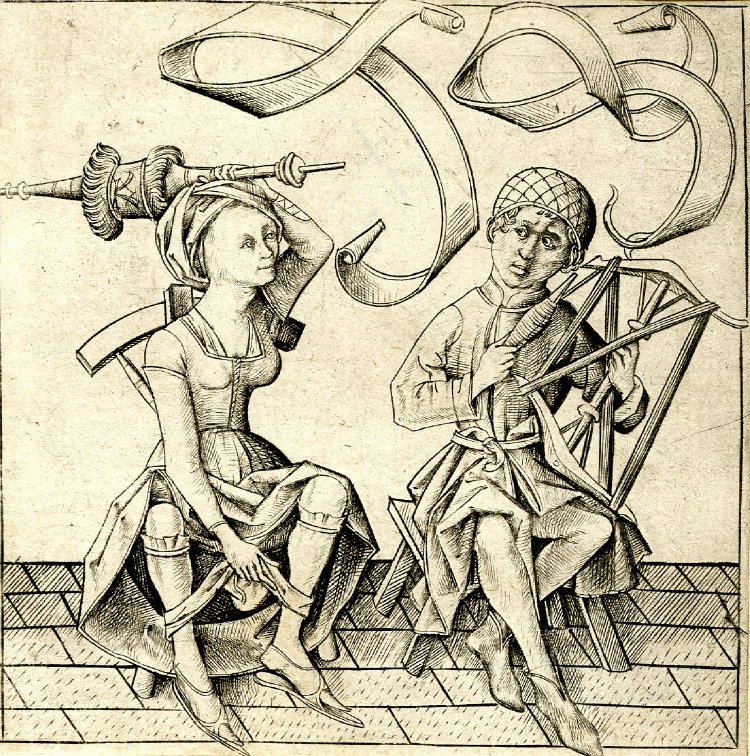


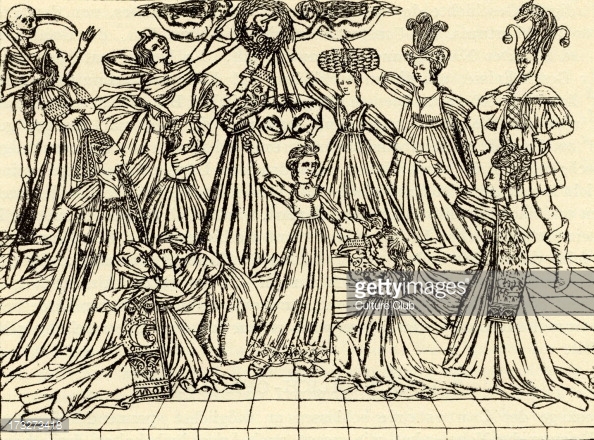

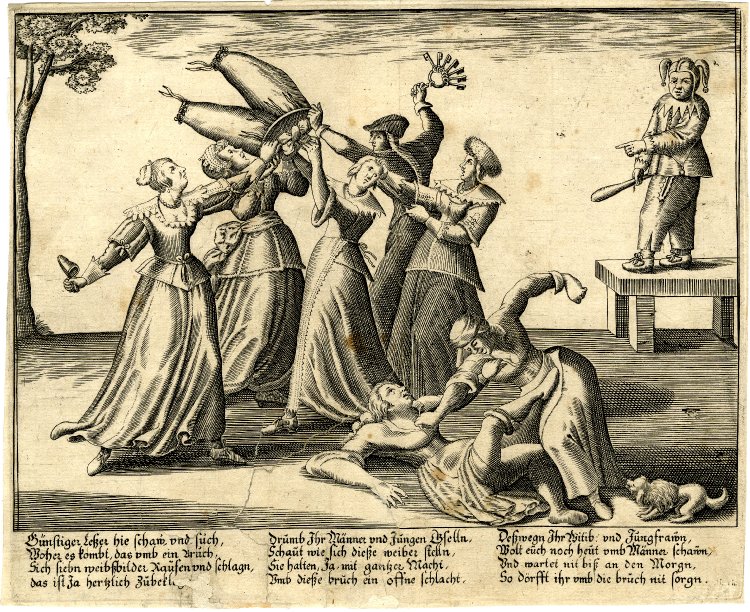
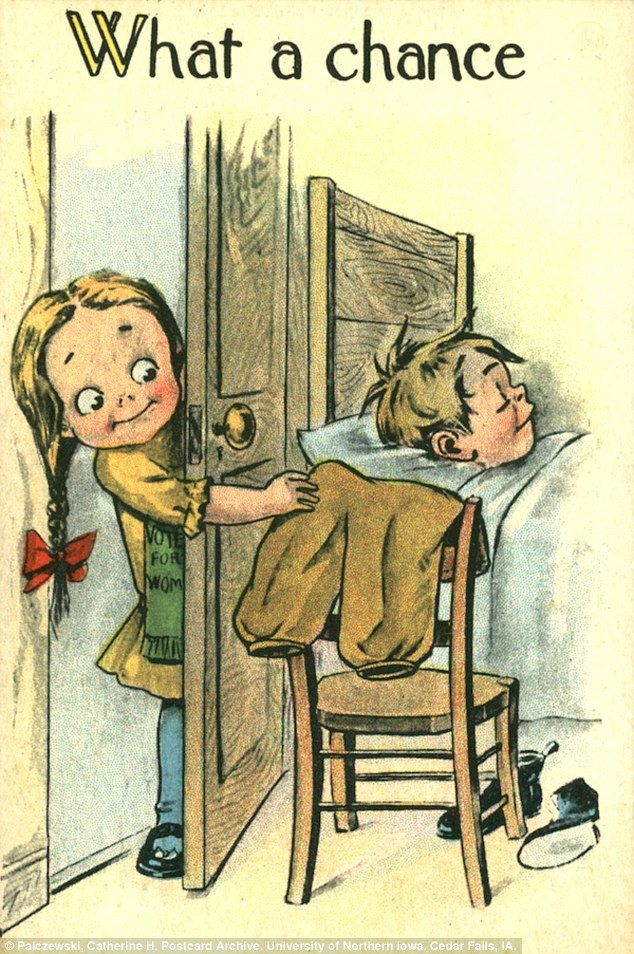
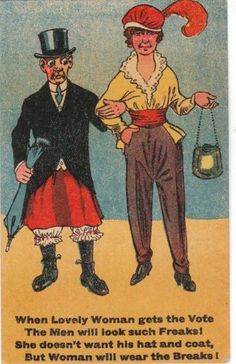
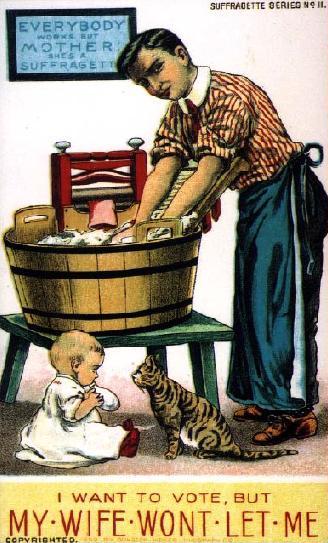
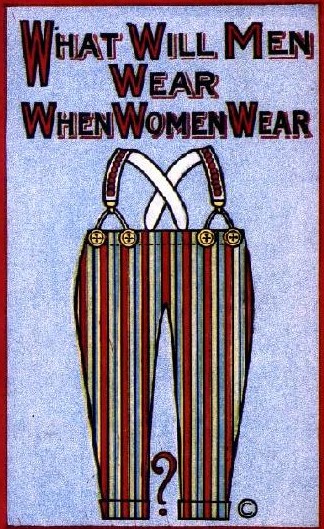
Hello Magdalena and thanks for an interesting blog which I have just found. Good to read some detailed history not the usual “Headlines”. Your blog made me wonder why women did not have (under) pants in their wardrobes, was there a convention against it? I hoe the woman in the Israhel van Meckenem print is putting on a clean pair of her husbands pants! LoL! As you are sure to know there are many other types of prints showing dominant wives, I seem to remember one from France where the wife was birching her husband’s bare bum in front of their children which raises some interesting possibilities. Thanks for this.
Hello Peter, thank you for the comment! I am happy you liked my post – and about the underpants I must say that it is not entirely clear what kind of lingerie women wore, however it is believed that women did not wear underpants or drawers until the late 18th century. It was not a question of conventions but rather customs and culture, I think. See more for example here: http://www.historyextra.com/lingerie